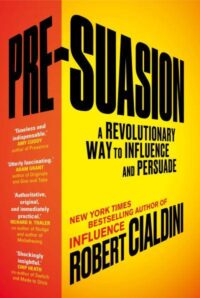Reading Notes for:


We are said to “pay” attention, which plainly implies that the process extracts a cost. Research on cognitive functioning shows us the form of the fee: when attention is paid to something, the price is attention lost to something else. Indeed, because the human mind appears able to hold only one thing in conscious awareness at a time, the toll is a momentary loss of focused attention to everything else.
Even though there are always multiple “tracks” of information available, Any other arrangement would leave us overloaded and unable to react to distinct aspects of the mongrelized input.
However, just as there is a price for paying attention, there is a charge for switching it: For about a half second during a shift of focus, we experience a mental dead spot, called an attentional blink, when we can’t register the newly highlighted information consciously.
Have you ever had a phone conversation with someone you can tell is engaged in another task, maybe because you can hear newspaper pages turning or computer keys clicking? I hate that. It shows me that my conversation partner is willing to lose contact with the information I’m providing to make contact with some other information.
But, I’m not the only one it advises. It notifies my conversation partner of the same thing, because people rightly believe that what they choose to attend to (or away from) reflects what they value at the time. Here’s the point for the influence process: whatever we can do to focus people on something—an idea, a person, an object—makes that thing seem more important to them than before.
Consider, for instance, a device used by the renowned psychotherapist Milton Erickson when dealing with patients who, over the course of treatment, had been unwilling to consider a point that Erickson felt was crucial to their progress—perhaps that failure to choose is a form of personal choice. Rather than inviting more resistance by amplifying his voice the next time he made this point, he recognized the wisdom of doing the opposite.
True to his reputation as a master moment maker, Dr. Erickson would wait for a heavy truck to begin climbing the hill outside his office window. Then, while timing his reintroduction of the crucial insight to coincide with the worst of the noise, he would lower his voice. To hear what Erickson was saying, patients had to lean forward, into the information—an embodied signal of focused attention and intense interest. When asked about the tactic, Erickson, who was famous for orchestrating the nonverbal elements of effective therapy, attributed its success to the leaning-in posture that patients assumed when trying to hear the information he wanted them to see as important.
Plenty of research shows that reducing the distance to an object makes it seem more worthwhile.
